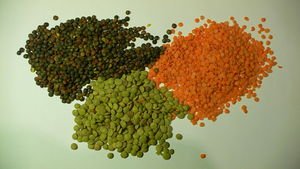Sure peanuts are a popular snack, but there is a whole lot more to the little crunchy treats than first meets the eye. Peanuts, which are actually a legume (like peas, beans and lentils), are packed with vitamins and nutrients and are a good source of heart-healthy monounsaturated fat. In spite of the health benefits offered from peanuts, they are also the leading cause of food allergies for a large number of people around the world. The following article will touch on some of the interesting facts about peanuts including their nutritional value, how they are grown, issues related to allergies and other information.
Peanuts make for an exceptionally healthy snack and are packed with vitamins and nutrients. High in protein they are quite filling which makes them a great choice for a quick snack between meals. They are a good source of niacin which has been shown to contribute to brain health, circulation and blood flow. Additional, peanuts have folate, manganese, and vitamin E along amongst others. Although peanuts do contain fat, it is monounsaturated fat which is the type of fat that is considered to be “good” fat. The nutrients in peanuts have been shown to reduce the risk of cardiovascular disease and cancer, help with brain function and have even been studied for their anti-aging effects.
Peanuts are harvested in many locations around the world including the United States. The peanuts are planted in the early spring after the last frost. To grow peanuts the shells are broken and the “nuts” are planted in the ground. The peanut plant itself is rather unusual since it flowers above ground but the peanuts grow below the surface. Approximately 120-160 days after they are planted the peanuts are ready to harvest. Specialized equipment lifts the peanut plants from the ground, shakes the dirt off them and turns them over with the peanuts facing up and the leaves down. The peanuts are then left to dry out for a couple of days before the harvesting is finished.
Peanuts are the number one food allergy in America. While mild allergic reactions to peanuts can include subtle symptoms like and itchy throat, swollen tongue, rash or stomach discomfort, severe allergic reactions can result in a condition called anaphylaxis which requires immediate emergency medical attention.
Part of the problem with so many people being allergic to peanuts is that they are everywhere you turn. Many popular foods include peanuts or peanut oil in their ingredient list which makes it very important for people with peanut allergies to remain vigilant with their diets. Peanuts used to be standard on airline flights but most airlines have done away with them in favor of other crunch snacks in part because of allergies (as well as cost.) Many schools are also implementing peanut-free foods because so many children suffer from peanut allergies.
When buying peanuts from the store you can buy them already shelled or still in the shell. If buying peanuts in their shells inspect the shells to make sure they are free from cracks, insect damage or dark spots. Peanuts that are still in their shells can be stored in a cool dry place for a long time. To extend their shelf life even further try storing them in the refrigerator.
As long as you are not allergic, peanuts make for a great snack and have many health benefits. Not only that, but they are a filling food and can help to keep hunger cravings under control.


